Related Research Articles

The Kingdom of Travancore, also known as the Kingdom of Thiruvithamkoor, was an Indian kingdom from c. 1729 until 1949. It was ruled by the Travancore Royal Family from Padmanabhapuram, and later Thiruvananthapuram. At its zenith, the kingdom covered most of the south of modern-day Kerala and the southernmost part of modern-day Tamil Nadu with the Thachudaya Kaimal's enclave of Irinjalakuda Koodalmanikyam temple in the neighbouring Kingdom of Cochin. However Tangasseri area of Kollam city and Anchuthengu near Attingal in Thiruvananthapuram were parts of British India.

Semmangudi Radhakrishna Srinivasa Iyer was an Indian Carnatic vocalist. He was the youngest recipient of the Sangeetha Kalanidhi awarded by the Music Academy in 1947, a distinction he holds to this day as of 2023, probably the only musician to receive that honour before reaching 40. He had received many other awards as well, including Padma Bhushan and Padma Vibhushan from the Government of India, Rajyasevanirata title from Travancore's erstwhile ruling family, Sangeet Natak Academy award (1953), Isai Perarignar from Government of Tamil Nadu and Kalidas Samman from Government of Madhya Pradesh. He was affectionately addressed as "Semmangudi Maama" by his disciples. He was also considered the "Pitamaha" or the grand sire of modern Carnatic Music. He was conferred with an honorary doctorate by University of Kerala in 1979.
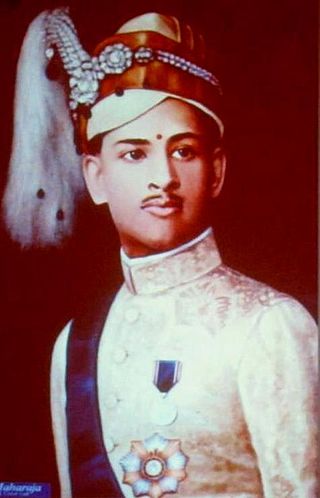
Sree Padmanabhadasa Sree Chithira Thirunal Balarama Varma, popularly known as Sree Chithira Thirunal, was the last ruling Maharaja of the Indian princely state of Travancore, in southern India until 1949 and later the Titular Maharajah of Travancore until 1991. His reign is known for several notable reforms that have indelible impact on the society and culture of Kerala.

University of Kerala, formerly the University of Travancore, is a state-run public university located in Thiruvananthapuram, the state capital of Kerala, India. It was established in 1937 by a promulgation of the Maharajah of Travancore, Chithira Thirunal Balarama Varma who was also the first Chancellor of the university. C. P. Ramaswamy Iyer, the then Diwan of the State was the first Vice-Chancellor. It was the first university in Kerala, and among the first in the country. Accredited by NAAC with highest grade of A++ and scored 3.67 points out of 4.
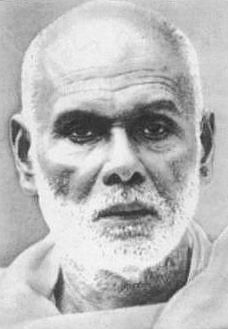
The Temple Entry Proclamation was issued by Maharaja Chithira Thirunal Balarama Varma on November 12, 1936. The Proclamation abolished the ban on the backward and marginalised communities, from entering Hindu temples in the Princely State of Travancore, now part of Kerala, India.

Pattom A. Thanu Pillai was an Indian politician and freedom fighter who served as the 2nd Chief Minister of Kerala from 1960 to 1962. He was considered as a central figure in Kerala politics.
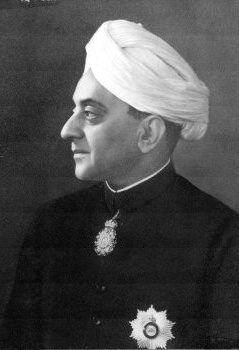
Dewan Bahadur Sachivottama SirChetput Pattabhiraman Ramaswami Iyer, popularly known as Sir C. P., was an Indian lawyer, administrator and politician who served as the Advocate-General of Madras Presidency from 1920 to 1923, Law member of the Executive council of the Governor of Madras from 1923 to 1928, Law member of the Executive Council of the Viceroy of India from 1931 to 1936 and the Diwan of Travancore from 1936 to 1947. Ramaswami Iyer was born in 1879 in Madras city and studied at Wesley College High School and Presidency College, Madras before qualifying as a lawyer from the Madras Law College. He practised as a lawyer in Madras and succeeded S. Srinivasa Iyengar as the Advocate-General of the Madras Presidency. He subsequently served as the Law member of the Governor of Madras and of the Viceroy of India before being appointed Diwan of Travancore in 1936.

Kunnathur Kesavan Raman Pillai, also known as Raja Kesavadas was the Dewan of Travancore during the reign of Dharma Raja Karthika Thirunal Rama Varma. He is well known for his military tactics and administrative acumen. He was the mastermind in developing the Alappuzha town.
The history of Thiruvananthapuram dates back to the 18th century AD. In 1795, the city became the capital of the princely state of Travancore. Several historic landmarks of the city, including the Kowdiar Palace, University of Kerala, and Napier Museum were built during that period. After independence, Thiruvananthapuram was made the capital of the state of Kerala.
Kerala Iyers, Pattars or Bhattars, are Tamil Brahmins of the Indian state of Kerala — people who were residents in the Kerala region, and also people who migrated from present day Tamil Nadu in different waves from the time of the Chera dynasty. They are Hindus. The community consists of two groups - the Palakkad Iyers and Iyers of the Cochin and Travancore regions.
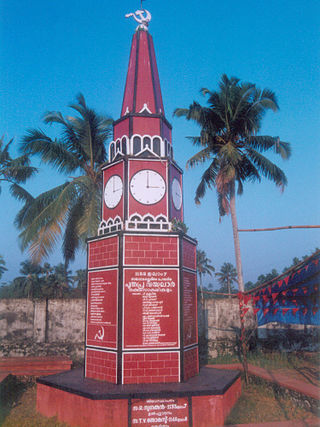
The Punnapra-Vayalar uprising was a militant communist movement in the Princely State of Travancore, British India against the Prime Minister, C. P. Ramaswami Iyer and the state. The revolt is named after the two places in which it took place; beginning in Punnapra and ending in Vayalar.

Thandaaneth Mathai Varghese (1886–1961) was an Indian freedom fighter, lawyer, statesman, former minister and politician from Kerala.
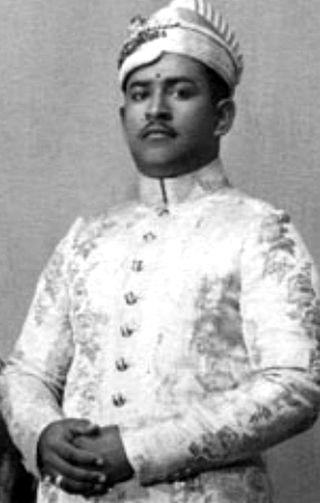
Sree Padmanabhadasa Sree Uthradom Thirunal Marthanda Varma was the titular Maharaja of Travancore. He was the younger brother of the last ruling monarch of the Kingdom of Travancore, Maharajah Chithira Thirunal Balarama Varma.
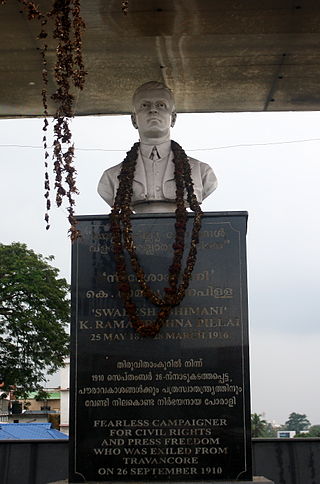
K. Ramakrishna Pillai (1878–1916) was an Indian nationalist writer, journalist, editor, and political activist. He edited Swadeshabhimani, the newspaper which became a potent weapon against the rule of the British and the erstwhile princely state of Travancore and a tool for social transformation. His criticism of the Diwan of Travancore, P. Rajagopalachari and the Maharajah led to the eventual confiscation of the newspaper. Ramakrishna Pillai was arrested and exiled from Travancore in 1910. Vrithantha Pathra Pravarthanam (1912) and Karl Marx (1912) are among his most noted works in Malayalam, Vrithantha Pathra pravarthanam being the first book on journalism in Malayalam and Karl Marx, the first ever biography of Karl Marx in any Indian language. But it has been alleged that he plagiarized the biography from an essay, "Karl Marx: A Modern Rishi", by Lala Hardayal, published in 1912 March issue of the Modern Review, published from Kolkata.

Diwan Bahadur V. S. Subrahmanya Iyer was an Indian administrator who served as the Diwan of the princely state of Travancore from 1929 to 1932.
K. S. Narayanaswamy, was a Carnatic veena exponent of the Thanjavur style, in which nuances and subtleties are given more importance over rhythm based acrobatics. He was awarded the Madras Music Academy's Sangeetha Kalanidhi in 1979.

Annie Mascarene was an Indian independence activist, politician and lawyer from Thiruvananthapuram, Kerala who served as a Member of the Parliament of India and was the first woman to do so.
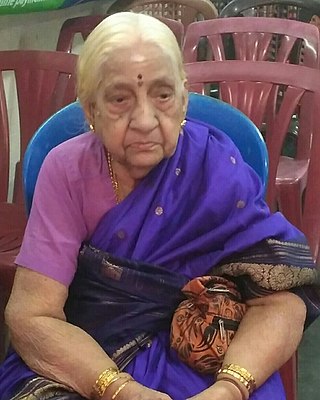
Parassala B. Ponnammal was an Indian Carnatic musician from the south Indian state of Kerala. She was a classical carnatic vocalist in the lineage of Semmangudi Srinivasa Iyer, Muthiah Bhagavathar, and Papanasam Sivan. She was the first woman to perform at the Navaratri Mandapam in Thiruvananthapuram as a part of the Navaratri Celebrations of the Sri Padmanabhaswamy temple in Kerala.
M. R. Ry. Kumar Aiyappan Pillai was an Indian lawyer, politician and writer. As one of the early leaders of the Bharatiya Janata Party, he served as its vice-president and at various times as chairman and treasurer. By the time of his death aged 108, he headed the party's disciplinary committee, oversaw its charitable endowments, and had become a most respected and venerable figure in the socio-cultural arena.
Travancore State Congress also known as the State Congress is a political party which was formed in 1938 to demand responsible governance in the princely state of Travancore.
References
- 1 2 The Hindu 27-2-2008.
- ↑ The Hindu 3-3-2008.
- 1 2 Yentha.com Interview Of The Week: Swathanthra Bharath Ki Jai, Interview with K. E. Mammen
- 1 2 3 Communism in Kerala: A study of political adaptation, by Thomas J Nossiter, Royal Institute of International Affairs, Page 92
- 1 2 3 4 workersforum.blogspot.com കെ. സി. എസ്. മണി - വിപ്ളവകാരികളിലെ ഒറ്റയാന്
- ↑ Geocities.ws (Geocities Archive), KeralaForum, 1965 Kerala Election Results